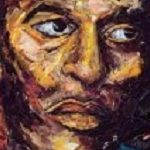
By Ahmad Jaradat
Hebron – the largest district in the occupied West Bank, where nearly a million Palestinians live – remains under siege.
Two weeks ago, all the entrances to the city, except one, were blocked with concrete blocks and iron barriers, severing hundreds of Palestinian villages’ connection to Hebron.
The only pathway to the city that remained open was in the north. However, Israeli forces erected a military checkpoint at the entrance to search civilians and their cars, causing significant delays.
Israeli soldiers also initiated a somewhat new occupation tactic for Hebron – enforcing age restrictions at checkpoints.
Four weeks ago, in the Hebron-area villages of Nabi Younis and al-Shuyouck, soldiers prevented people under 30 years old from passing through checkpoints. Similar age restrictions were enforced at the entrance to the town of Beit Aynoun.
Today, soldiers used Palestinians’ residency status to limit their movement. At the Kfar Atzion checkpoint and along the alternative road in the Tago area, soldiers prohibited Hebron residents from travelling to Bethlehem and the northern West Bank.
Neighbouring villages are also being severed from the city of Hebron by being quarantined themselves ; in past weeks, Bait Awwa, Aramadeen, Al Dahiryya, Al Fawwar refugee camp and Dura were all sealed.
Furthermore, the heart of Hebron is in no way exempt from this violent militarisation.
Soldiers continue to attack several schools in downtown Hebron, firing teargas both in and around the buildings.
Local teachers report that due to the attacks and proliferation of checkpoints, school instruction usually only begins at 10 a.m. The schools in downtown Hebron serve approximately five thousand Palestinian students.
Israeli soldiers also continue to force Palestinians to close their shops in Hebron, especially around the downtown Al Sahal area.
Settler attacks compound the violence of the Israeli military in downtown Hebron.
In the last two days, several such attacks were reported near the settlement of Kiryat Arba, as well as in Al Aras, Wadi Husain, and Jaber.
Settlers threw stones at Palestinian residents and their houses.
Ahmad Jaradat is coordinator of the social movements project at the Alternative Information Center (AIC)

